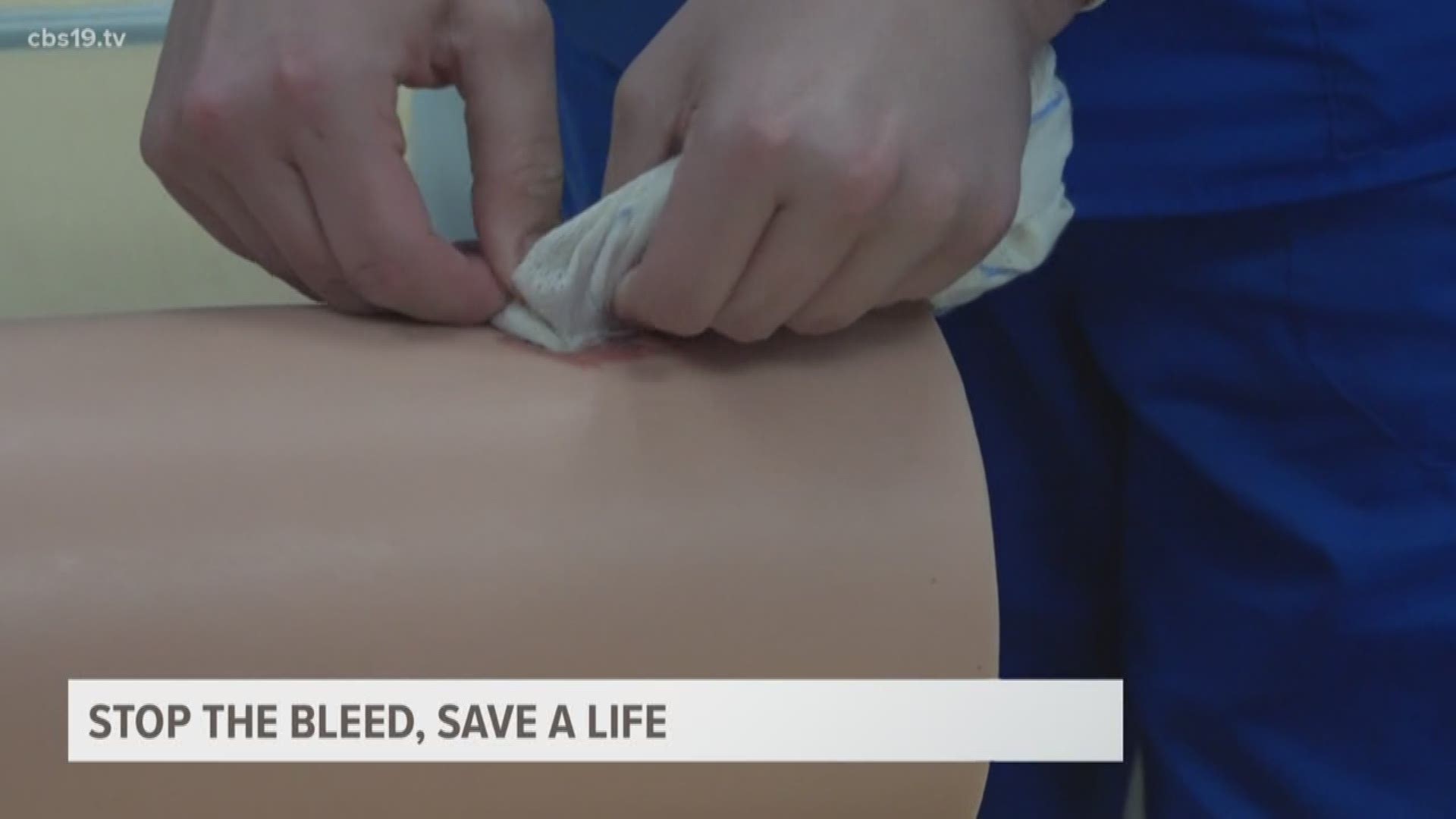LONGVIEW, Texas — In an emergency, seconds count. That is why CPR is so important and schools have AEDs.
Stopping a bleed is also important, which is why many organizations across Longview came together to provide a "stop the bleed" course to the public.
"It's a collaboration that we're calling one East Texas because we need to come together to empower our community to respond if something occurs," , Assistant Professor in the College of Nursing at UT Tyler Longview, Katheryn Courville, said.
A couple of dozen people came to the course Thursday night to learn how to stop a bleed if someone is seriously injured.
"You can easily bleed out in just a few minutes if you don't control bleeding," Lee Walker, the President of the East Texas Emergency Nurses Association said.
The course is one of many preventative measures taking place across the country not just on Thursday, National Stop the Bleed day, but throughout the year.
"This is not just for mass casualty incidents. "This could be driving on the road, you know, can save a life in a car accident, or any kind of commercial grade, even in your classroom," Walker explains.
There are three steps to follow:
- Call 911
- Find the bleed
- Compress the wound.
- Put pressure on the wound
- Pack the wound
- Put a tourniquet above the wound
When addressing the bleed and putting pressure on it use gause, a bandage, even a clean cloth, if the bleeding doesn't slow down you might need to pack the wound.
Packing the wound means inserting gauze or another clean material into the wound and then again, putting pressure on the top.
If even packing the wound does not work, use a tourniquet. Place it a few inches above the wound as tightly as possible until the bleeding stops.
A tourniquet can actually be a tourniquet, or it can be a blood pressure cuff, belt, even a shirt. Anything that can tighten or be tied tight enough to stop the bleeding.
Avoid using a string or any thin material, it will not be strong enough to put the pressure where it needs to be.
If you are wondering why you cannot always wait for a first responder.
"For first responder to respond is about four minutes. That's a quickest time, but someone can bleed out in about two to three minutes," Courville said.
"But if they're bystanders nearby, with the proper tools and the proper training, then the ambulance taking 4 to 5 minutes isn't going to be as big of a factor on that civilian's life," student at UT Tyler Ryan Jacobs said.
Emergency items like a stop the bleed kit are becoming more and more popular emergency items to have on hand.
The City of Longview has already had Stop the Bleed kits installed in eight major buildings in the city, according to the Longview Fire Department. They're also working to make sure people are trained.
More classes are planned for the future if you are interested in attending.
Monday, June 10
CHRISTUS Good Shepherd
CHRISTUS Institute for Healthy Living
5:30-7:00 p.m.
Thursday, June 20
Longview Regional Medical Center
Senior Circle Center
5:30-7:00 p.m.
If you would like to have a class taught at your business or organization you can contact the group here.

